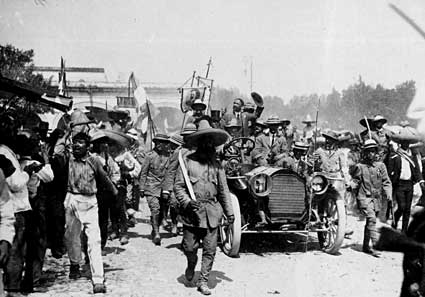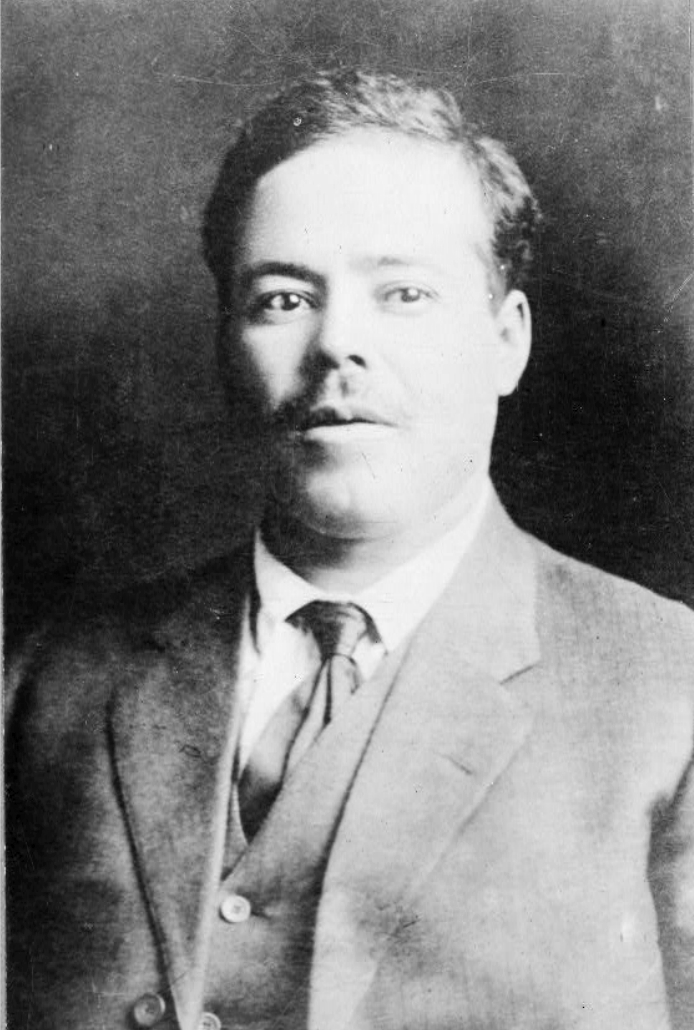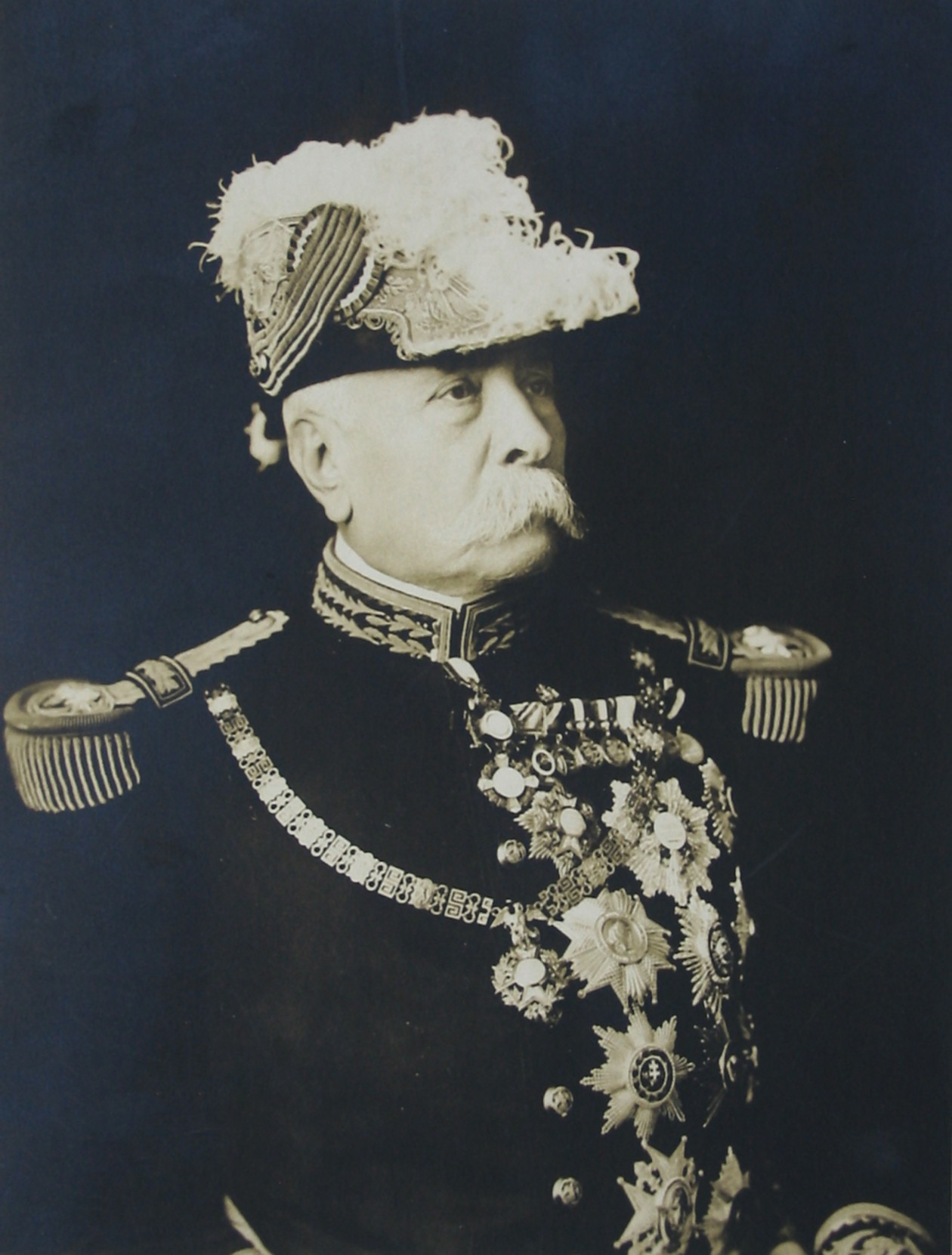|
Raúl Madero (politician)
Raúl Miguel Hidalgo Madero González ( Parras de la Fuente, Coahuila, 16 September 1888 – Mexico City, Federal District, 8 October 1982 ) was a prominent Mexican revolutionary military and politician, brother of the hero of the Mexican Revolution. He was the brother of Francisco I. Madero and businessman and politician Gustavo A. Madero. After the death of President Francesco Madero, Madero joined the forces of General Francisco Villa, with whom he participated for almost the entire rest of the revolutionary stage. He was governor of Nuevo León at this time, and in subsequent years he was governor of Coahuila. Mexican Revolution Despite his wealth, in 1910 he joined the revolutionary movement in San Antonio, Texas, headed by his brother Francisco I. Madero, and acted as one of his closest collaborators. In the armed struggle he held the position of secretary treasurer and on 9 February 1911 he was awarded the rank of Major. He fought with the rank of Captain in the ... [...More Info...] [...Related Items...] OR: [Wikipedia] [Google] [Baidu] |
Gustavo A
Gustavo is the Latinate form of a Germanic male given name with respective prevalence in Portuguese, Spanish, and Italian. It is derived from Gustav /ˈɡʊstɑːv/, also spelled Gustaf, a Swedish name, likely from Slavic Gostislav. People with the name Drama, film and television * Gustavo Alatriste, Mexican actor, director, and producer of films, married to Silvia Pinal * Gustavo Aguerre (born 1953), Argentine artist, curator, writer, and theatre designer * Gustavo Sorola, American actor, podcast host, and co-founder of the American company, Rooster Teeth Engineering, religion and science * Gustavo Colonnetti (1886–1968), Italian mathematician and engineer * Gustavo Gutiérrez Merino (1928-2024), Peruvian theologian and Dominican priest regarded as the founder of Liberation Theology at the University of Notre Dame * Gustavo Tamayo, Colombian ophthalmologist * Gustavo Marín, Chilean-French economist and sociologist * Gustavo Scuseria (born 1956), Robert A. Welch ... [...More Info...] [...Related Items...] OR: [Wikipedia] [Google] [Baidu] |
Brigadier
Brigadier ( ) is a military rank, the seniority of which depends on the country. In some countries, it is a senior rank above colonel, equivalent to a brigadier general or commodore (rank), commodore, typically commanding a brigade of several thousand soldiers. In other countries, it is a Non-commissioned officer, non-commissioned rank. Origins and history The word and rank of "Brigadier" originates from France. In the French Army, the Brigadier des Armées du Roi (Brigadier of the King's Armies) was a general officer rank, created in 1657. It was an intermediate between the rank of Mestre de camp and that of Maréchal de camp. The rank was first created in the cavalry at the instigation of Marshal Turenne on June 8, 1657, then in the infantry on March 17, 1668, and in the dragoons on April 15, 1672. In peacetime, the brigadier commanded his regiment and, in maneuvers or in wartime, he commanded two or three - or even four - regiments combined to form a brigade (including his ... [...More Info...] [...Related Items...] OR: [Wikipedia] [Google] [Baidu] |
Pascual Orozco
Pascual Orozco Vázquez, Jr. (in contemporary documents, sometimes spelled "Oroszco") (28 January 1882 – 30 August 1915) was a Mexican revolutionary leader who rose up to support Francisco I. Madero in late 1910 to depose long-time president Porfirio Díaz (whose Porfiriato, eponymous era lasted from 1876 to 1911). Orozco was a natural military leader whose victory over the Federal Army at Ciudad Juárez was a key factor in forcing Díaz to resign in May 1911. Following Díaz's resignation and the democratic election of Madero in November 1911, Orozco served Madero as leader of the state militia in Chihuahua, a paltry reward for his service in the Mexican Revolution. Orozco revolted against the Madero government 16 months later, issuing the Plan Orozquista in March 1912. It was a serious revolt which the Federal Army struggled to suppress. When Victoriano Huerta led a coup d'état against Madero in February 1913 during which Madero was murdered, Orozco joined the Huerta re ... [...More Info...] [...Related Items...] OR: [Wikipedia] [Google] [Baidu] |
Ciudad Juárez
Ciudad Juárez ( , ; "Juárez City"), commonly referred to as just Juárez (Lipan language, Lipan: ''Tsé Táhú'ayá''), is the most populous city in the Administrative divisions of Mexico, Mexican state of Chihuahua (state), Chihuahua. It was known until 1888 as ("The North Pass"). It is the seat of the Juárez Municipality, Chihuahua, Juárez Municipality with an estimated metropolitan population of 2.5 million people. Juárez lies on the Rio Grande, Rio Grande (Río Bravo del Norte) river, south of El Paso, Texas, United States. Together with the surrounding areas, the cities form El Paso–Juárez, the second largest binational metropolitan area on the Mexico–United States border, Mexico–U.S. border (after San Diego–Tijuana), with a combined population of over 3.4 million people. Four international points of entry connect Ciudad Juárez and El Paso: the Bridge of the Americas (El Paso–Ciudad Juárez), Bridge of the Americas, the Ysleta–Zaragoza Internatio ... [...More Info...] [...Related Items...] OR: [Wikipedia] [Google] [Baidu] |
Peppino Garibaldi
Brigadier-General Giuseppe Garibaldi II (29 July 1879 – 19 May 1950), better known as Peppino Garibaldi, was an Italian soldier, patriot and revolutionary. He was grandson of Giuseppe Garibaldi. Biography Garibaldi was born in Melbourne, Australia, the son of Ricciotti Garibaldi and Harriet Constance Hopcraft. Together with his father, he took part in the Greco-Turkish War of 1897 alongside the Greeks and afterwards fought with the liberals against Cipriano Castro in Venezuela, and in other conflicts in South America. He volunteered and served with great distinction in the British Army during the Second Boer War, carrying with him a sword given to his grandfather by the working men of Tyneside, England, in 1854. He served as a lieutenant colonel (''teniente coronel'') in the army of Francisco I. Madero during the initial victories of the 1910 Mexican Revolution. Plaza Garibaldi in Mexico City was named in honor of his actions in the battle of Nuevo Casas Grandes. Panc ... [...More Info...] [...Related Items...] OR: [Wikipedia] [Google] [Baidu] |
Battle Of Casas Grande
The Battle of Casas Grandes was fought in March 1911 between the federal Mexican Army loyal to President Porfirio Díaz and rebels under Gen. Francisco I. Madero. Rebel forces attacked the town of Casas Grandes, Chihuahua, but were driven back by the federal garrison. Battle Francisco I. Madero was leading a rebel army of about 800 troops when he attacked Casas Grandes. Several of Madero's men were in fact American citizens from the border states. The garrison included just over 500 infantry, who were commanded by Col. Agustín A. Valdez of Mexico's 18th Battalion. Gen. Madero and his men attacked the federal positions in Casas Grandes at 5:00 am. Fighting lasted for just over two hours until 7:15 am, when another Mexican government column of 562 men reinforced the already engaged 500 troops. With the reinforcing federals were two mortars, which were quickly put into use. The battle continued for several hours more, as the federals and rebels repulsed each other's counter-attack ... [...More Info...] [...Related Items...] OR: [Wikipedia] [Google] [Baidu] |
San Antonio
San Antonio ( ; Spanish for " Saint Anthony") is a city in the U.S. state of Texas and the most populous city in Greater San Antonio. San Antonio is the third-largest metropolitan area in Texas and the 24th-largest metropolitan area in the United States at 2.6 million people in the 2020 United States census. It is the most populous city in and the county seat of Bexar County. San Antonio is the seventh-most populous city in the United States, and the second-most populous in the Southern United States and Texas, after Houston. Founded as a Spanish mission and colonial outpost in 1718, the city in 1731 became the first chartered civil settlement in what is now present-day Texas. The area was then part of the Spanish Empire. From 1821 to 1836, it was part of the Mexican Republic. It is the oldest municipality in Texas, having celebrated its 300th anniversary on May 1, 2018. Straddling the regional divide between South and Central Texas, San Antonio anchors the southwe ... [...More Info...] [...Related Items...] OR: [Wikipedia] [Google] [Baidu] |
Nuevo León
Nuevo León, officially the Free and Sovereign State of Nuevo León, is a Administrative divisions of Mexico, state in northeastern Mexico. The state borders the Mexican states of Tamaulipas, Coahuila, Zacatecas, and San Luis Potosí, San Luis Potosi, and has an extremely narrow international border with the U.S. state of Texas. Covering 64,156 square kilometers (24,771 square miles) and with a population of 5.78 million people, Nuevo León is the thirteenth-largest Political divisions of mexico, federal entity by List of Mexican states by area, area and the seventh-most List of Mexican states by population, populous as of 2020. Monterrey, the state's capital, is the most populous city in Nuevo León and the List of cities in Mexico, ninth-largest in Mexico. Monterrey is part of the Monterrey metropolitan area, the Metropolitan areas of Mexico#List of metropolitan areas in Mexico by population, second-largest metropolitan area in the country with an estimated population of 5.3 ... [...More Info...] [...Related Items...] OR: [Wikipedia] [Google] [Baidu] |
Francisco Villa
Francisco "Pancho" Villa ( , , ; born José Doroteo Arango Arámbula; 5 June 1878 – 20 July 1923) was a Mexican revolutionary and prominent figure in the Mexican Revolution. He was a key figure in the revolutionary movement that forced out President and dictator Porfirio Díaz and brought Francisco I. Madero to power in 1911. When Madero was ousted by a coup led by General Victoriano Huerta in February 1913, Villa joined the anti-Huerta forces in the Constitutionalist Army led by Venustiano Carranza. After the defeat and exile of Huerta in July 1914, Villa broke with Carranza. Villa dominated the meeting of revolutionary generals that excluded Carranza and helped create a coalition government. Emiliano Zapata and Villa became formal allies in this period. Like Zapata, Villa was strongly in favor of land reform, but did not implement it when he had power. At the height of his power and popularity in late 1914 and early 1915, the U.S. considered recognizing Villa as ... [...More Info...] [...Related Items...] OR: [Wikipedia] [Google] [Baidu] |
Mexican Revolution
The Mexican Revolution () was an extended sequence of armed regional conflicts in Mexico from 20 November 1910 to 1 December 1920. It has been called "the defining event of modern Mexican history". It saw the destruction of the Federal Army, its replacement by a Liberation Army of the South, revolutionary army, and the transformation of Mexican culture and Federal government of Mexico, government. The northern Constitutionalists in the Mexican Revolution, Constitutionalist faction prevailed on the battlefield and drafted the present-day Constitution of Mexico, which aimed to create a strong central government. Revolutionary generals held power from 1920 to 1940. The revolutionary conflict was primarily a civil war, but foreign powers, having important economic and strategic interests in Mexico, figured in the outcome of Mexico's power struggles; United States involvement in the Mexican Revolution, the U.S. involvement was particularly high. The conflict led to the deaths of around ... [...More Info...] [...Related Items...] OR: [Wikipedia] [Google] [Baidu] |







